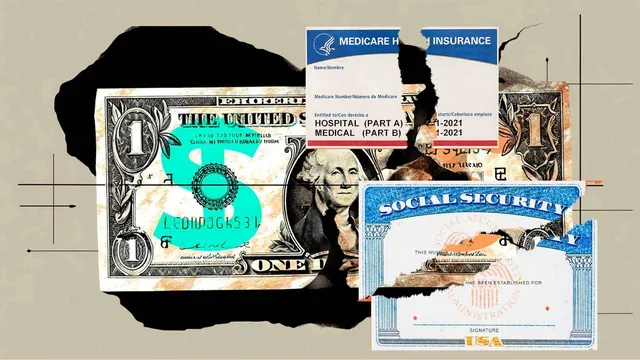
Social Security faces drastic cuts while lawmakers remain inactive
2025-06-29 17:24- The Social Security Administration will begin collecting overpayments starting in July 2025.
- Half of the benefit payments will be withheld from those recipients who received excess funds due to errors.
- Failure to reform Social Security could result in significant automatic cuts in benefits.
Express your sentiment!
Insights
The Social Security Administration (SSA) has revealed significant changes regarding benefit payments that are expected to take effect in July. Starting from this month, overpayments made to beneficiaries will lead to a 50% withholding of their scheduled payments. This adjustment aims to address the issue of excess funds disbursed incorrectly to recipients. Nearly 73,000 overpayments were identified by the SSA, primarily due to internal errors rather than any fault of the beneficiaries. Originally, the SSA had planned to withhold 100% of checks for those affected, but the policy was revised to a 50% deduction. In addition, a deadline is quickly approaching, as the SSA has declared that by September 30, 2025, all payments must transition to electronic forms. This follows an executive order issued earlier, and it will require nearly 500,000 Americans who still receive paper checks to adopt electronic payment methods instead. This change is designed to enhance efficiency and security in the distribution of vital benefits. These developments come at a precarious time, as projections suggest that the Social Security and Medicare programs face severe funding shortfalls. If no action is taken soon to rectify the financial trajectory of these programs, a mandated automatic cut of 23% in Social Security benefits is expected to occur by 2033. On the Medicare side, hospital payments may see an 11% reduction, posing a risk to service quality. Legislators are urged to confront these impending challenges since the ongoing trend of neglecting reform may lead to drastic outcomes for beneficiaries. Various proposed solutions, such as adjusting payroll taxes, have been met with resistance from both lawmakers and the public, complicating the already dire situation further. Currently, public sentiment appears to lean against the kind of reform that could prevent more ruthless cuts. The benefits system faces pressure from legislative actions, like the recent Social Security Fairness Act, intended to enhance distribution but potentially adding more strain to existing finances. Advocacy for targeted reforms, particularly to scale back benefits for high earners while preserving those for lower-income seniors, has surfaced. The concepts of cap limits on benefits and comprehensive adjustments to the overall system would benefit from transparency and an honest dialogue about the programs' sustainability.